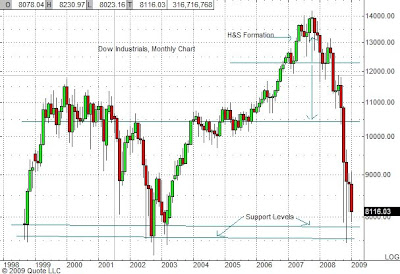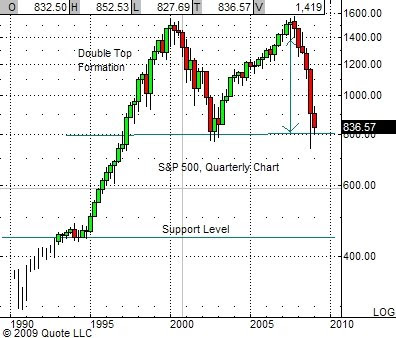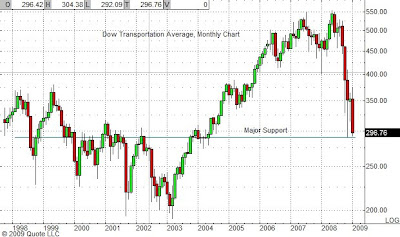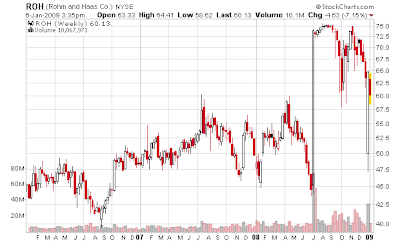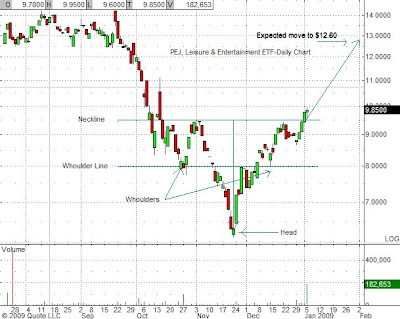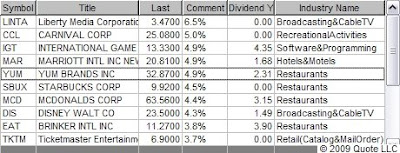According to a
December 14, 2008 segment of 60 Minutes entitled “The Mortgage Meltdown,” we are apparently in the lull of the first half of the mortgage crisis. The first shoe to drop was the $trillion+ write-downs due to defaults in the subprime mortgage sector. The good news is that most of the air has already leaked out of this bubble, but the bad news is that another, perhaps more sizable, bubble is beginning to form.
The other shoe: The Alt-A and Option ARM mortgage bubbleThis new bubble is composed of more esoteric types of mortgage instruments, the so-called “Alt-A” and “option ARM” mortgages. (See below for a brief explanation of each.) Credit Suisse estimates this bubble to be roughly the same or even slightly larger than the previous one. Defaults are expected to kick-in now and ramp up rapidly through the next two years peaking in the summer of 2011. If this gruesome scenario pans out, I don't think a depression is out of the question.
But this next bubble may not turn out to be as bad as projected. According to several realtors who posted their opinions on blog threads about this news segment, some of these mortgages have already been priced into the subprime bubble. But don't get too optimistic because the general consensus is that the worst is still far from over.
Assuming we have any money left with which to invest, the question is: How can we profit from this?
Short playsObvious choices are
long-term bearish plays on any of the major indexes (DIA, SPY, etc.), the banking sector (XLF), the home builders and home construction (ITB, XHB, PKB), consumer discretionary (PEJ), retail (RTH). [Corresponding ETFs in parentheses.] It seems as if a paradigm shift in our saving and spending habits (more saving, less spending) is in process and anything that addresses this shift could be investment-worthy.
Long playsAlthough the government is pressuring banks into easing foreclosure requirements that doesn't mean that foreclosures are going to disappear. Far from it. In the
60 Minutes piece, one analyst estimated that 50-70% of the Alt-A and option ARM mortgages will end in default. This means that contrary to the popular belief that the housing market will begin to turnaround this summer, more than likely that will be when it begins a new downward spiral. People will be forced to move to smaller homes (if they can even get a mortgage), into rental units, or (gasp!) move back in with dear ol' mom and dad. Personally, I believe that the latter is going to be a very popular option simply because it's the cheapest. I'll even go so far as to predict a decline in the high-end rental markets and even an exodus from high-rent metropolitan areas such as New York City, San Francisco, and Los Angeles. (There's already a plethora of “For Rent” signs here on the West Side of LA, the likes of which I haven't seen in a very long time.)
People will be moving and needing a place to store their stuff. The next coming wave of foreclosures could well be a boon for the
moving and storage companies: Ryder (R), Amerco (you know it as U-Haul)
(UHAL), Public Storage (PSA), Sovran Self Storage (SSS), U Store It (YSI), and
Extra Space Storage (EXR). The last four companies operate as REITs and as such pay dividends; Sovran and Extra Space sport dividend yields of 9.3% and 10.6% respectively. Although not a REIT, Ryder does pay a dividend (2.7%).
Other companies who could fare well are
furniture and home appliance rental companies such as
Aaron Rents (RNT) and
Rent-A-Center (RCII). Aaron Rents has been doing extremely well of late. It closed today at $27 and is only $3 away from its all-time high of $30. It's been trading in a rising channel meaning that any break below the lower trend line should be treated with caution as that's usually a strong indication of a price reversal. (See chart below.)
Less money means people will be electing to fix up their cars rather than trading them in for new ones so a case could also be made for
auto parts suppliers such as
Autozone (AZO), Advance Auto Parts (AAP), O'Reilly Automotive (ORLY), and
Pep Boys (PBY). Of this group, Autozone has been kicking the competition's butts. Its stock is looking to test its $140 all-time high for the fourth time. Manny, Moe, and Jack, however, need to tune-up their operations. Their stock is sitting near its historic low of $3 but on the bright side, it does pay a dividend of nearly 8%.
A similar argument could be applied to the home builders but then again what they gain in DIY home repair projects could be offset by projects lost to new housing construction. I'm definitely no expert on this one.
The above is but a tip of the iceberg of possible plays. As always, do your own due diligence before investing.
Conclusion The above speculation is based on the opinions of a few people interviewed by
60 Minutes. In the interest of full disclosure, I have to say that I've always regarded that program's journalistic integrity. Although I have no evidence to the contrary, I do feel as if they slant their segments to emphasize one side of the story--theirs. But even if their predictions presented in "The Mortgage Meltdown" were exaggerated, I don't believe they're false and neither do most of the real-estate professionals who have seen and commented on it. I think it's only wise and prudent to be prepared for more fiscal pain. Nationalization of the banking and financial industry could well become a reality.
I truly hope not.
Alt-A and Option ARM Mortgages: Alt-A mortgages fall between the prime and sub-prime loan requirements; they're riskier than the former and not as risky as the latter.
Option ARMS are insidious types of loans whereby an ultra-low payment rate (also called a “teaser” rate and often around 1%) is offered initially. The loan resets after a specified period of time (usually 5 years) and depending on the terms of the loan, the rate can go up dramatically. These loans have an inherent negative amortization component and it's entirely possible that the loan principle can exceed the value of the property. These loans are hallelujahs for house flippers in rapidly rising real-estate markets. In declining markets and in rising interest rate environments, you can easily lose your shirt.


